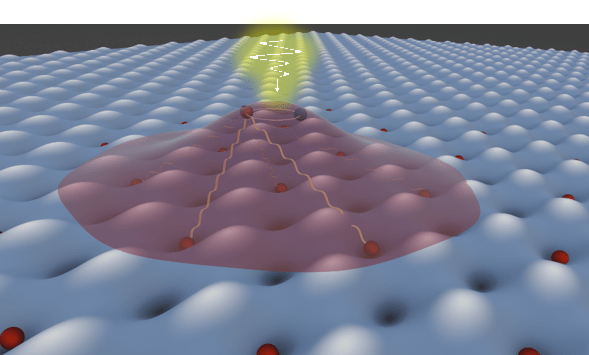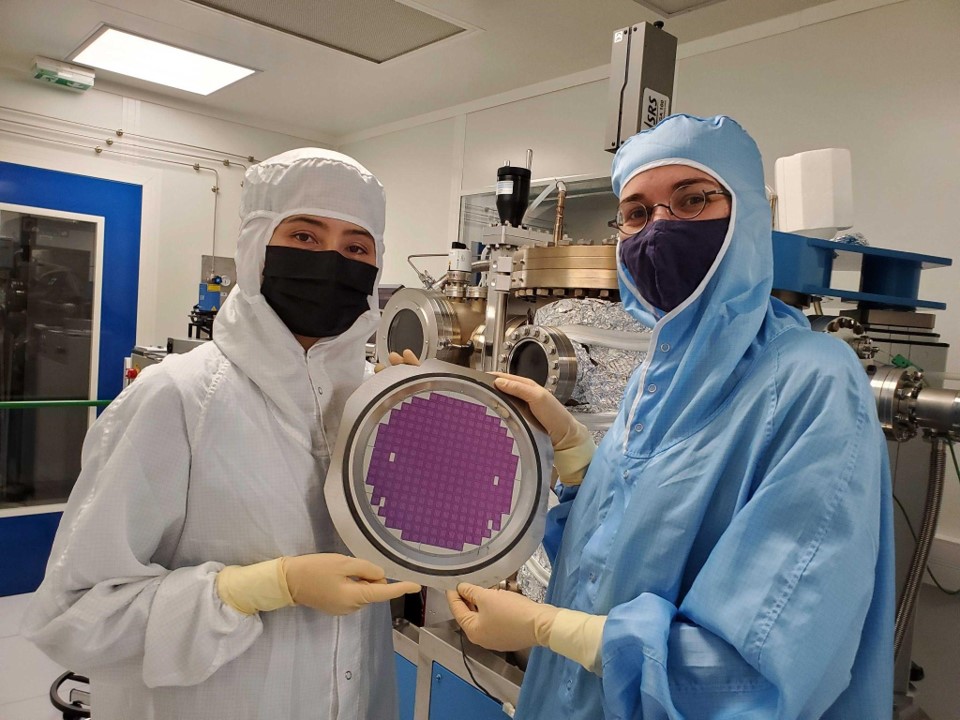Researchers at the University of Washington and the University of Hong Kong have discovered that light from a laser can trigger a form of magnetism in a normally nonmagnetic material.
This magnetism centers on the behavior of electrons ‘spins,’ which have a potential applications in quantum computing. Scientists discovered that electrons within the material became oriented in the same direction when illuminated by photons from a laser. By controlling and aligning electron spins at this level of detail and accuracy, this platform could have applications in the field of quantum simulation.
The team worked with ultrathin sheets — each just three layers of atoms thick — of tungsten diselenide and tungsten disulfide. Both are semiconductor materials, so named because electrons move through them at a rate between that of a fully conducting metal and an insulator, with potential uses in photonics and solar cells. Researchers stacked the two sheets to form a “moiré superlattice,” a stacked structure made up of repeating units.
Stacked sheets like these are powerful platforms for quantum physics and materials research because the superlattice structure can hold excitons in place. Excitons are bound pairs of “excited” electrons and their associated positive charges, and scientists can measure how their properties and behavior change in different superlattice configurations.
The researchers were studying the exciton properties within the material when they made the surprising discovery that light triggers a key magnetic property within the normally nonmagnetic material. Photons provided by the laser “excited” excitons within the laser beam’s path, and these excitons induced a type of long-range correlation among other electrons, with their spins all orienting in the same direction.
The spin alignment that the researchers witnessed within the superlattice is a characteristic of ferromagnetism, the form of magnetism intrinsic to materials like iron. It is normally absent from tungsten diselenide and tungsten disulfide. Each repeating unit within the moiré superlattice is essentially acting like a quantum dot to “trap” an electron spin. Trapped electron spins that can “talk” to each other, as these can, have been suggested as the basis for a type of qubit, the basic unit for quantum computers that could harness the unique properties of quantum mechanics for computation.
The work has been published in Nature.



